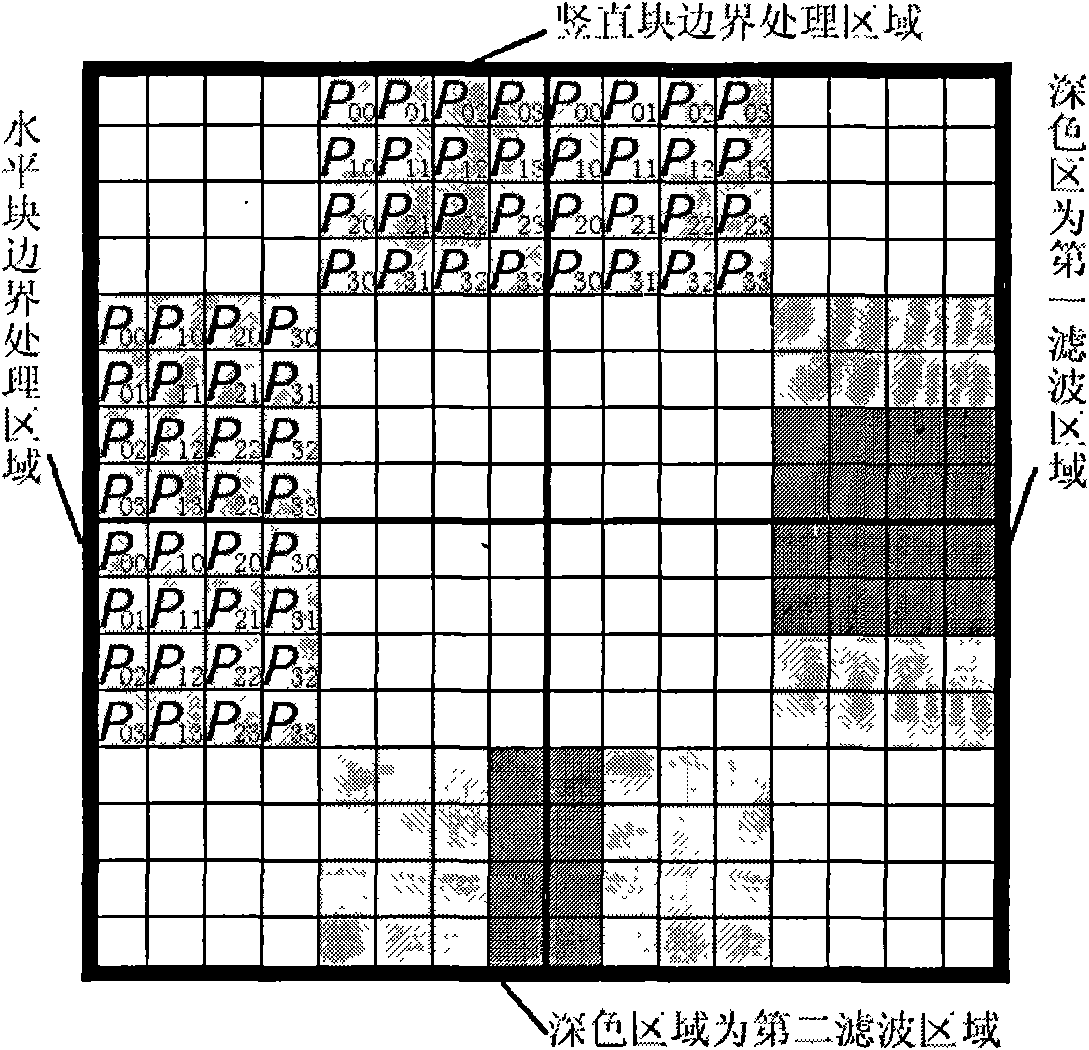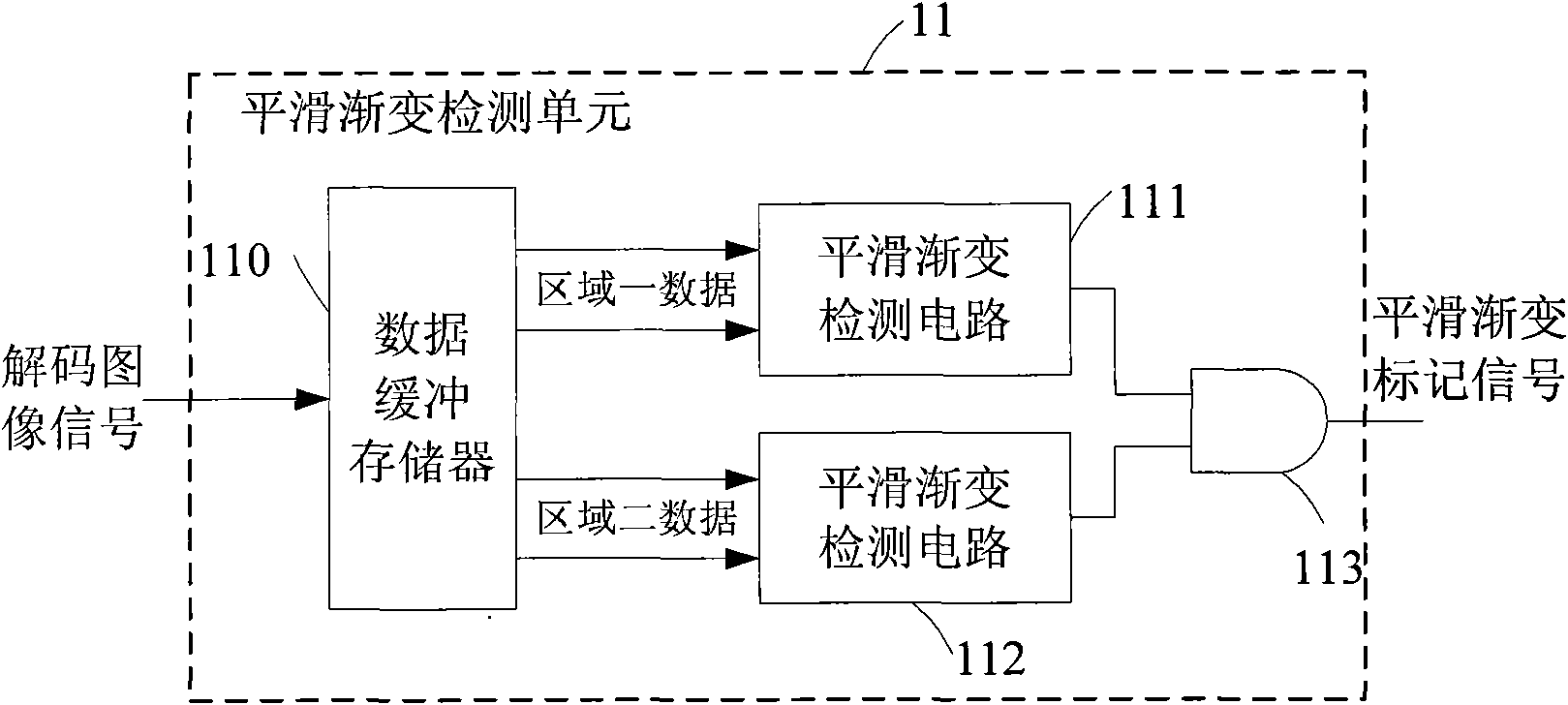Blocky effect removal device for compression coded image
A technology of compression coding and block effect, applied in image communication, television, electrical components, etc., can solve problems such as large amount of calculation, loss of DCT coefficients, discontinuity, etc., and achieve high removal efficiency, low complexity, and good effect
- Summary
- Abstract
- Description
- Claims
- Application Information
AI Technical Summary
Problems solved by technology
Method used
Image
Examples
Embodiment Construction
[0019] The present invention will be further elaborated below in conjunction with the accompanying drawings.
[0020] One of the embodiments of the present invention is as figure 1 As shown, the device for removing blockiness of compressed and encoded images in the present invention includes an area classification unit 10, a filter processing unit 20, and a selector 30, and the area classification unit 10 further includes a smooth gradient detection unit 11 and a brightness step detection unit 12, and the filter processing unit 20 further includes a smooth gradient filter 21 (first filter) with high smoothness and a brightness step filter 22 (second filter) with low smoothness.
[0021] The smooth gradient detection unit 11 calculates the luminance difference of adjacent pixels in the block boundary area according to the decoded image signal, marks the area with a small absolute value of the luminance difference and the same gradient direction as the smooth gradient type, and ...
PUM
 Login to View More
Login to View More Abstract
Description
Claims
Application Information
 Login to View More
Login to View More - R&D
- Intellectual Property
- Life Sciences
- Materials
- Tech Scout
- Unparalleled Data Quality
- Higher Quality Content
- 60% Fewer Hallucinations
Browse by: Latest US Patents, China's latest patents, Technical Efficacy Thesaurus, Application Domain, Technology Topic, Popular Technical Reports.
© 2025 PatSnap. All rights reserved.Legal|Privacy policy|Modern Slavery Act Transparency Statement|Sitemap|About US| Contact US: help@patsnap.com



